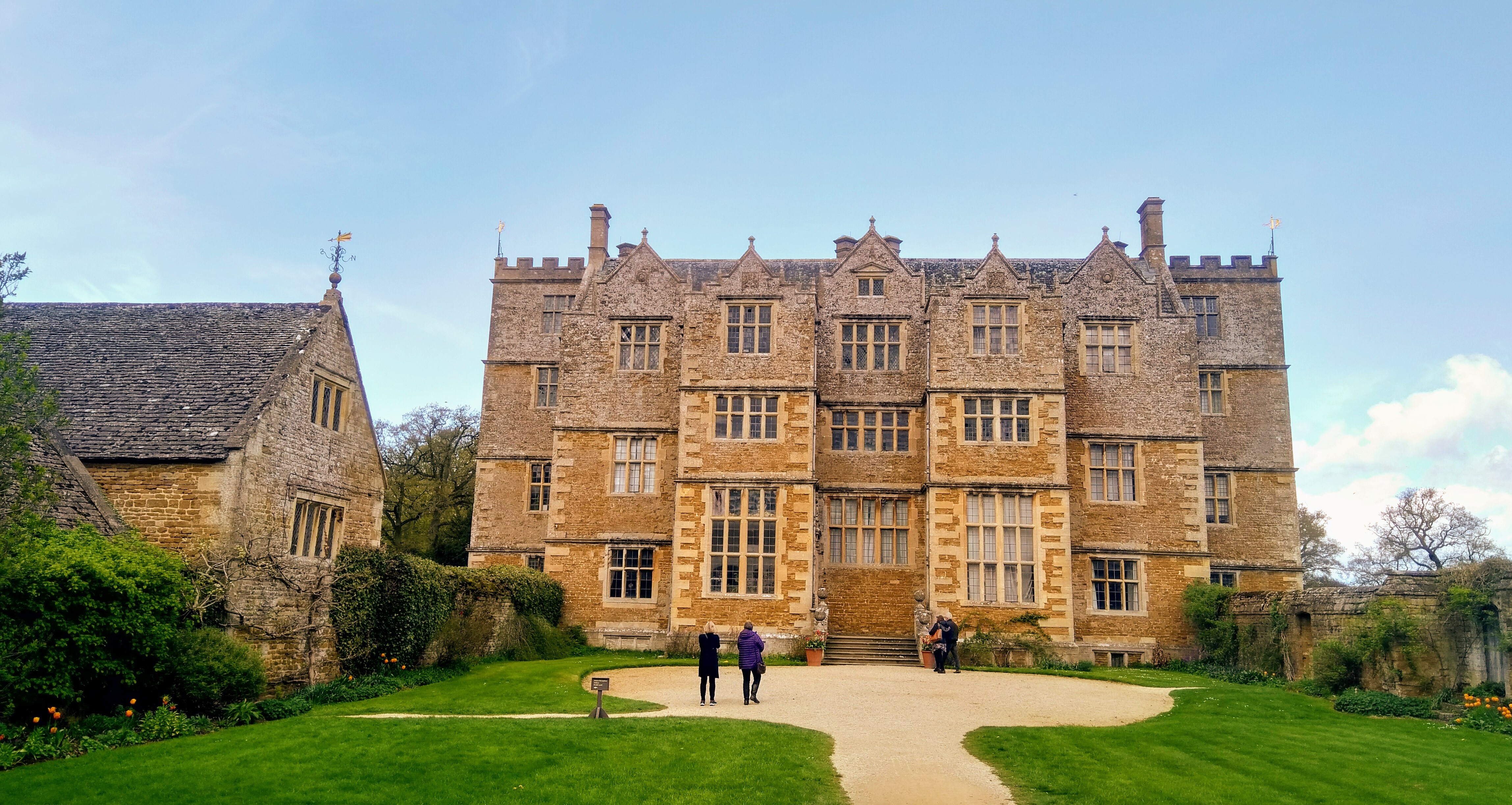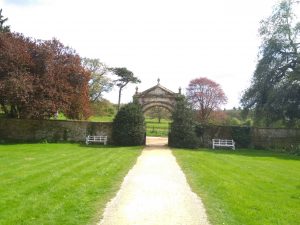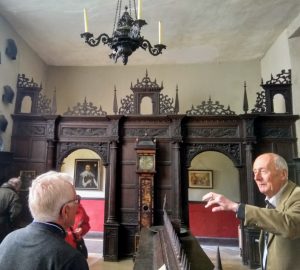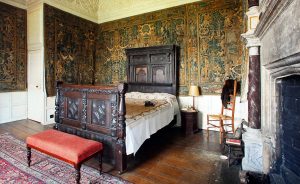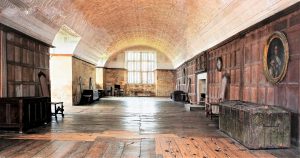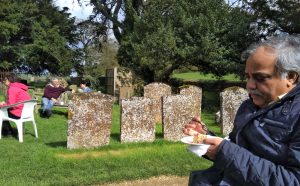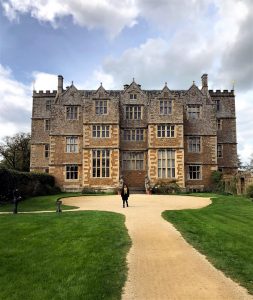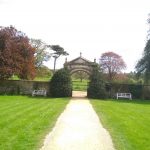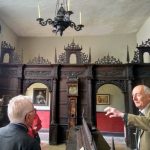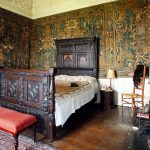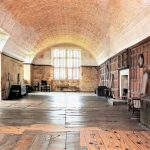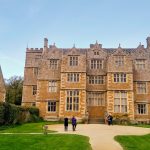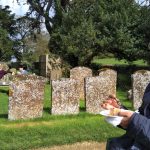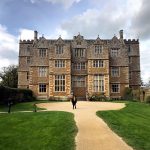Chastleton House-Preserved as it is Not as it Was
We drove through the beautiful Oxfordshire valley towards ‘the preserved in time’ Chastleton house, the early 17thcentury Jacobean house. The grand ancestry of the magnificent interior house struggled to preserve it for four centuries till it had to be finally sold in 1991 that made the last owner say ‘poverty is a great preservative’ as Chastleton house strangely survived well! With umbrellas shielding the heavy downpour and noting the car park warning that the management is not responsible for cars struck in the muddy car-park we headed towards the house on the curving sloping long path!
Historical milieu
The downpour declined into a drizzle as we walked on recollecting the name Chastleton that may have been derived from the Saxon word ‘chester’ meaning a fortified camp as there is archaeological evidence of an Iron age hill-fort above the village. Chastleton has been on records since 777AD when gifted to Benedictine Abbey by King Offa!
Walter Jones, a wealthy wool merchant set up this house as we see it today in 1602-4 and though the prosperity did not last long the family still retained it for 400 years!
Chastleton House of monetary sadness
Past the 12thcentury Saint Mary’s church we got a view of the once fashionable elite home of the Jones family. Of pale yellow local stone it is a kind of Manor house with three storeys, mullion windows and gabled roof caught in the time warp.Recalling now, the memories of the Chastleton house are- unmistakable air of sadness arising out of monetary frustration for centuries! Escaping the rain we were ushered into the warmth of the Entrance porch that led us to the splendid Screens Passage. The 16thcentury fine decorative Oak wood screen separated the passage from the Great Hall.
The medieval Great Hall
The Great Hall had the medieval look to it where the high ranking family and guests ate on a raised dais which was fashionable in the 1600’s! Walking over stone-flags floor, we admired the great Oak-table here and the family portraits on the walls seemed to express the story of the first owner to the last.
The carved White Parlour
We entered the beautiful White Parlour highly ornamented with oak carvings to match the ceiling design that was used for receiving guests or as a private sitting room. Also on display were Victorian Parlour games contributed by the Jones family that were hugely popular indoor games before Television took over!
The vast Great parlour
The Great parlour with the Dining table looked more inviting than the previously seen Oak table! We appreciated the early 18thcentury French Tapestry and twisted stem Blown-glasses along with the 19thcentury Stained glass windows.
The fascinating First Floor
Viewing the shadowy ground floor through the shafts of sunlight streaming through the windows we climbed on a grand staircase to reach one of the rooms called Fettiplace Bedroom named so after a Jones member married into this local gentry’s family in 1600’s. The room held a beautifully carved bed and the walls were adorned with intricate Tapestries from the 17thcentury. Admiring the hundreds of years old art of crewel embroidery bedspread we moved to the Great Chamber.
Spectacular Great Chamber
The 16th-17thcentury Great Chamber has a great size as was traditional to have one in houses of that era. It was all white, spectacular and dramatic public room of the Chastleton house. The high ceiling with floral plaster pattern and walls with 24 painted roundels from the Old Testaments, the ornate stone chimney piece with Walter Jones coat of arms ; all together create an extraordinary attractive room, straight out of a movie set!
More private Middle Chamber
This looked like a more intimate room that was used as a withdrawing room along with the Great Chamber. The beautiful white17thcentury original double plaster frieze of fruits and flowers below the ceiling is an attention grabber. We found out that it had been used to celebrate a family wedding and later as a bedroom too!
The unforgettable Tapestries- Sheldon Room
Besides the luxuriously carved high back and front wooden bed, the multiple 16thcentury Tapestries are outstanding feature of this room depicting the ancient Greek Planetary Gods with their Zodiac signs! Sheldon room was so named after Walter Jones acquaintance Ralph Sheldon and served as the bedroom of several cash-strapped owners of the Chastleton Manor.
Across four centuries Library
The 2500 books and journals library as well as bookcases in many rooms of the Chastleton house; ranging over four centuries is a major attraction for avid book lovers like us! The acmes are-the glass framed Royal Bible read to King Charles in 1649 at the time of his execution, works of Aristotle1596, the earliest Latin volume printed in Venice and 14 books from the 16thcentury!!
Cavalier room- a story
The bedroom named in memory of ‘cavalier’ Arthur Jones, a family member who hid in the Secret room – the closet of Cavalier room while the soldiers looking for him rested in this very room in 1651 during the civil-war!
Glorious Long Gallery
Finally we reached the third floor to witness the most glorious 22 meter Long Gallery- a spectacular combination of wood panelling and plasterwork – a status symbol of the Jones family in the past, today mostly bare except for the1500’sSpanish leather chest. The time machine took me back into the medieval times when the Jones family used it for indoor walks and to hang family portraits, with the utility transforming into ‘wet weather recreation like badminton’ to being a passage to the Cook’s room!
Kitchens since 1612
Watching the big Range in the Old Kitchen in the basement, the row of pans & pots and the Sink, was like being on a film-set, barely changed since 1612 except the ‘newer’ Victorian cooking range! The smoke- blackened ceiling remained unpainted to preserve the family fortune!
Open to visitors since 1930’s
We came across a black & white poster inviting visitors to the Chastleton house with photographs of its rooms & highlights, offering free car park and refreshments obtainable for just pounds 2! This was a new way of fund-raising by widowed owner Irene Whitmore Jones who conducted tours herself and wrote Guide books, in the mid- 1930’s carried on till the National Trust bought it in 1991 and has preserved it.
Tea in the graveyard
Sunshine was out after the rain in typical English weather style so we finished off with tea and cake at the Saint Mary’s Church next door that was an exciting experience for the chairs of the charitable Tea-shop inside the Church were laid amongst the graves- both old and new!
Photo Gallery
- The Arch Entrance Gate of Chastleton house
- The fine Screens passage from the 1600’s
- Exquisite tapestries-Sheldon room
- 22 Meter glorious Long Gallery on the 3rd floor
- Medieval Chastleton house
- Visitors enjoying tea & cake in the Church graveyard
- Writer at Chastleton Manor
